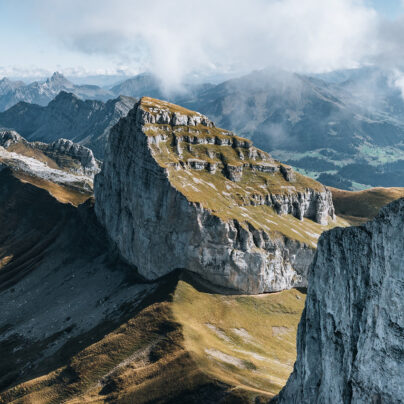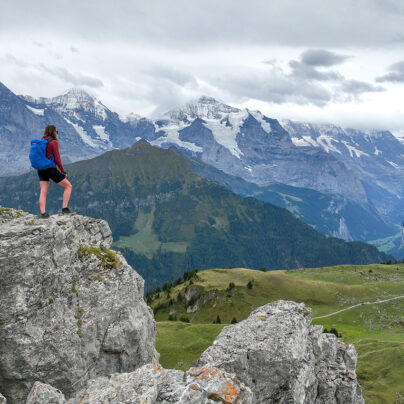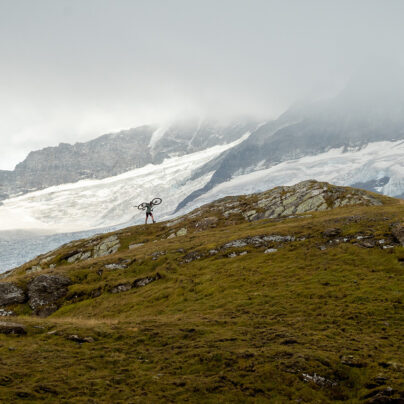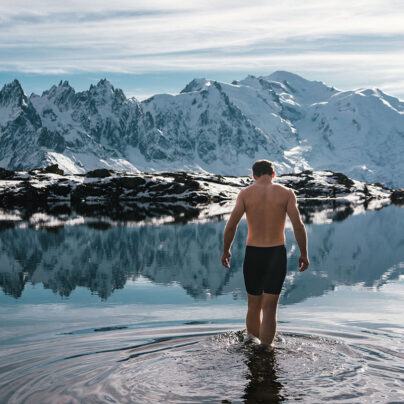In Search of the Golden Eagle
Words & Photography by David Dinsley
The short and dark days of winter are now but a memory, and spring, as I write this, is upon us. The wildflowers have begun slowly unfurling, reaching towards the light of longer days. Skylarks are singing high over their prospective territories and the heather stems rustle around me.
You’ll find me on the Isle of Islay, Queen of the Hebrides. I am the warden of the Oa reserve, a 2,100-hectare nature reserve and working farm owned by the RSPB (Royal Society for the Protection of Birds).
In the water below, an otter moves through the glare, skirting the rock edge where land meets water. With smooth and slinking movements, it soon vanishes out of sight. To my left the haunting call of a great northern diver echoes across a small coastal bay – a sound reminiscent of the wailing from an eerie spirit. The diver sits tight to the surface, peering its head under for a quick glimpse below. I watch as it sinks under the water, looking for molluscs and fish. It does this time and time again. Occasionally, it brings something to the surface – in this case a crab. It removes the crab’s legs and pincers from the carapace before swallowing it whole.
In front of me, harbour seals lounge and loll on the rocks above the gentle lapping tide, snorting and whining when the urge strikes them. Now a raft of red-breasted mergansers drift past the seals. Like the diver, they submerge looking for fish, and seize them within their serrated bills. They quickly catch and swallow the fish once they return to the surface. But they aren’t alone. Opportunistic herring gulls follow them and pillage their catch.
I’ve been in here for hours, watching, waiting, and observing. No sign of my quarry yet, though. The camera is primed and ready for when and if the moment arises.
The tide has risen and pushed the seals from their rocky lounges and into the water. I notice a large hunched and bold shape in amongst the tussle of branches on a dead, leafless tree to my right. It’s swiftly joined by another. Flying up from below and carried on broad wings and stiff wingbeats, it perches next to the first. These are the white-tailed eagles I’m here for.
I hear the great northern divers in front of me panicking as they disappear from sight. In all the commotion, I can’t quite tell what just happened. Both eagles gain height and turn back towards their downed target, swooping and snatching at it with talons ready. Flying low and extending their legs, they make a decent go of it, but miss.
I’ve been in here for hours, watching, waiting, and observing. No sign of my quarry yet, though. The camera is primed and ready for when and if the moment arises.





Nothing else matters in that instant before I hit the shutter, capturing a moment in time. A fine example of this electricity is when I locked eyes with a female sparrowhawk. She stared with lightning-yellow eyes straight down the barrel of the lens.
As the eagles fly up to gain height and speed one more time, I manage to get a look at what exactly it is that they are targeting. Shockingly, it’s a buzzard. In most parts of the UK this would be the dominant raptor species, but not here. The buzzard uses its wings as oars and swims for the rocky shore of the bay. The eagles swoop again, and the buzzard retaliates with its own talons.
One of the eagles retreats into the treeline and vanishes; the other returns for a final attempt, but it doesn’t manage to grab its prey. With that it returns to the tree. The buzzard continues paddling towards the shore, and, from what I can tell, just about makes it.
The eagles have given up. As a final hoorah, the eagle erupts high from the tree and flies right over me and out of sight.
***
It’s thanks to my day job that I discovered my passion for wildlife photography. It creates a gateway to pure mental escapism for me – one in which I can clear my mind and focus on the relationship between my eye, the camera, and the subject.
Nothing else matters in that instant before I hit the shutter, capturing a moment in time. A fine example of this electricity is when I locked eyes with a female sparrowhawk. She stared with lightning-yellow eyes straight down the barrel of the lens. In addition to the white-tailed eagles and the sparrowhawk, I’ve also been fortunate to observe and photograph buzzards, ravens, and peregrine falcons.
But it is the enigmatic golden eagle that I really want to capture on camera. Far more secretive and elusive by its very nature, the golden will see you coming a mile away and vanish from sight, lost to the sky. There’s no chance you can walk towards one and expect to do well.
For large birds, golden eagles are incredibly efficient hunters and, despite their large size, can reach incredible speeds of 150-200mph when stooping on prey – second only to the peregrine falcon.
In the future I intend to build a golden eagle hide: hidden somewhere in the landscape, but not close enough to disturb these birds in their territory, and only built and used once the breeding season has come to a close. When built, the hide will be set near a regular perching point for these enigmatic birds, and to get the results I want will involve a lot of time sitting and waiting (not to mention a heavy lashing of good luck). But isn’t that charm? You could wait for hours, days, weeks even, for that one single golden moment that could last just seconds.
It’s critically important to remember that these are Schedule One birds, and as such have the highest level of protective status in the UK. As an employee of the RSPB, I hold a Schedule One license to observe several species of rare and protected birds that breed on the reserve. Setting up on a nearby vantage point and using spotting scopes, we quietly and effectively survey our golden eagle eyries (nests) from a distance of 1km, in line with the guidance. Nest disturbance is no joke, particularly during the egg-laying stage when they will most likely abandon the nest if disturbed.





I’m sheltering against the white rocks of a craggy and rugged hillside. The western winds are whipping at my face, and as the sea crashes and carves the shore 100ft below, I’m watching over a vast and expressive landscape in front of me. The terrain leads to a sheer cliff face, battered by the elements and the slow passage of time.
I move my face to the spotting scope, looking down the barrel. My eyes focus. There it is – the eyrie, and upon it a female golden eagle tucked in tight, only her head and the top of her wings visible. She’s brooding her eggs, sitting and waiting for the male to release her of her maternal duties. I swear that, even from this distance, she can see me. Staring straight down the eyepiece of the spotting scope.
To date my greatest photographic encounters with golden eagles have been pure luck. Every now and again they will drift nonchalantly over me as I’m hunkered into a crag surveying them, sometimes not spotting me until they pass over. These birds know every stretch of this hillside, glen, and crag like the back of their hand – or talon – so a surprise encounter is the only way to get a close-up view.
On other occasions I’ve been lucky enough to have them literally fly over my house, sometimes quite low. The farmhouse sits above a loch that provides a great view into the glens that flow down into it. If I observe a golden approaching, heralded by the calls of chaos and alarm from all the other birds in the area, it gives me the opportunity to scramble for my gear and run for the door. It’s a frenzy; an adrenaline rush of natural delight.
A shadow looms from the distant right-hand horizon. It’s a white-tailed eagle. It glides over the coast, mobbed by gulls as it drifts closer and closer to the golden eagle territory. In mere moments, it’s above the nest site and soaring in circles on the updraft over the rocky fortress.
I move my face to the spotting scope, looking down the barrel. My eyes focus. There it is – the eyrie, and upon it a female golden eagle tucked in tight, only her head and the top of her wings visible. I swear that, even from this distance, she can see me. Staring straight down the eyepiece of the spotting scope.
Suddenly my eyes are drawn upwards as another raptor arrives overhead. The male golden eagle! He charges ahead to meet the intruder. When they meet the two don’t grapple. They don’t even connect, but the sheer dominant presence of the male golden pushes the white-tailed eagle clear out of the area. I can’t help but feel inspired every time I see one of these majestic creatures in flight, moving through the sky with a freedom you can’t even imagine, and a view of the world everyone desires to see.
Find David on Instagram @naturenortheast








